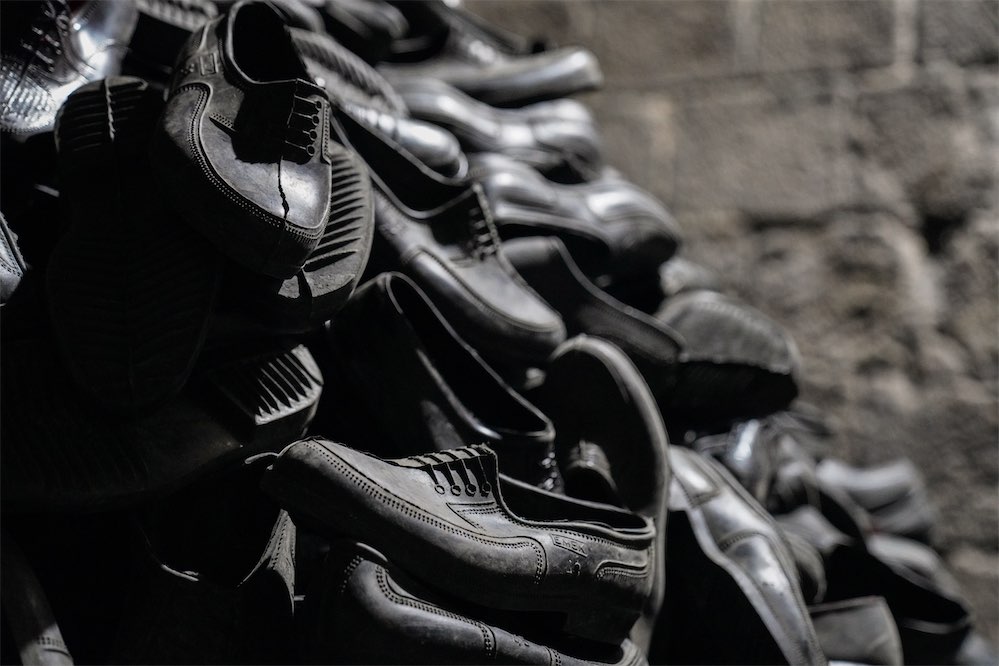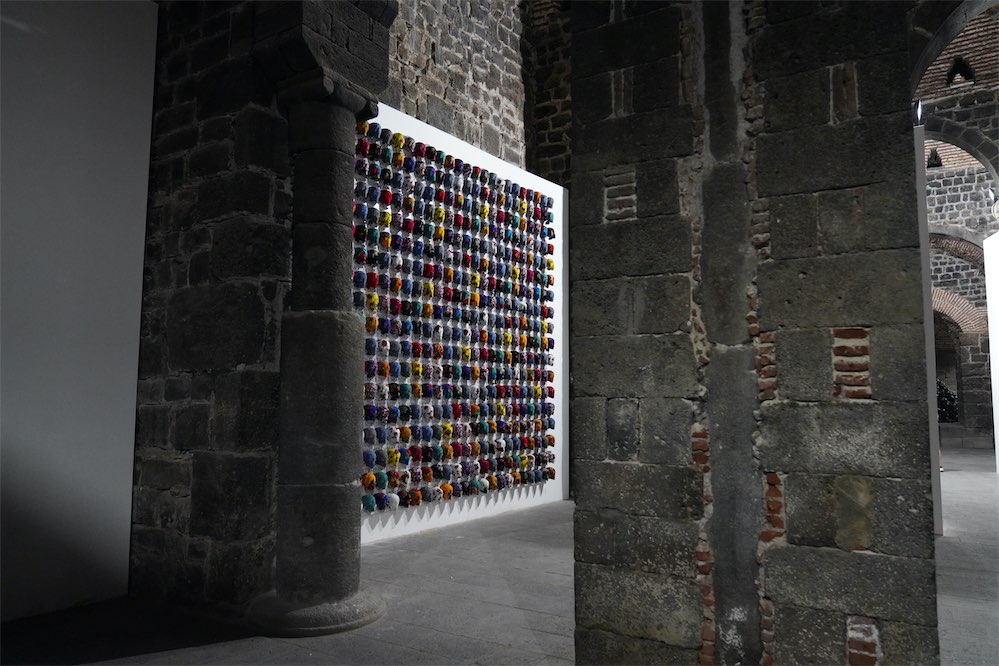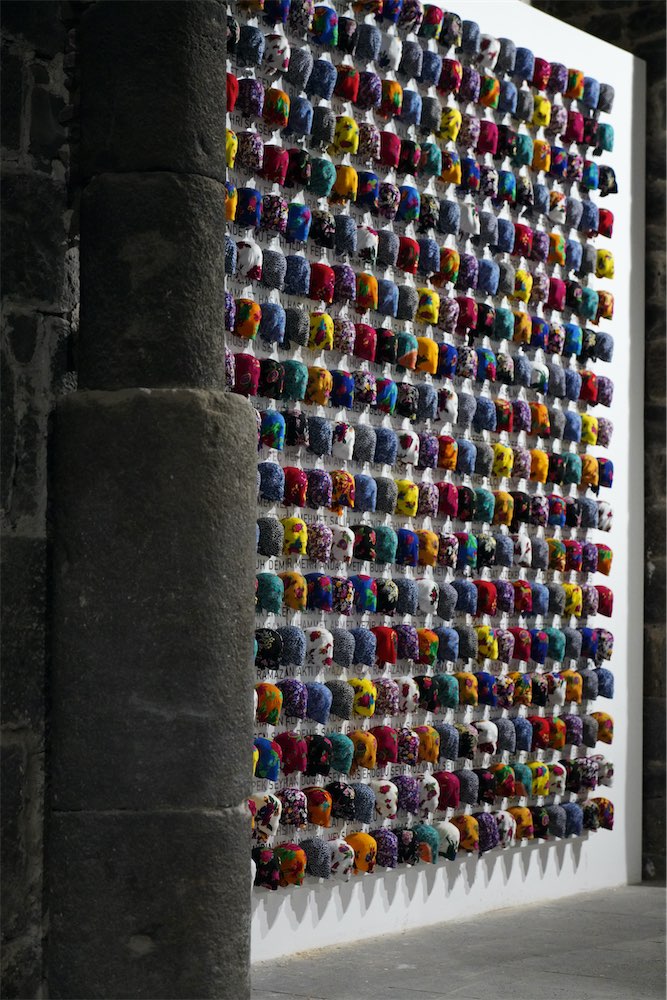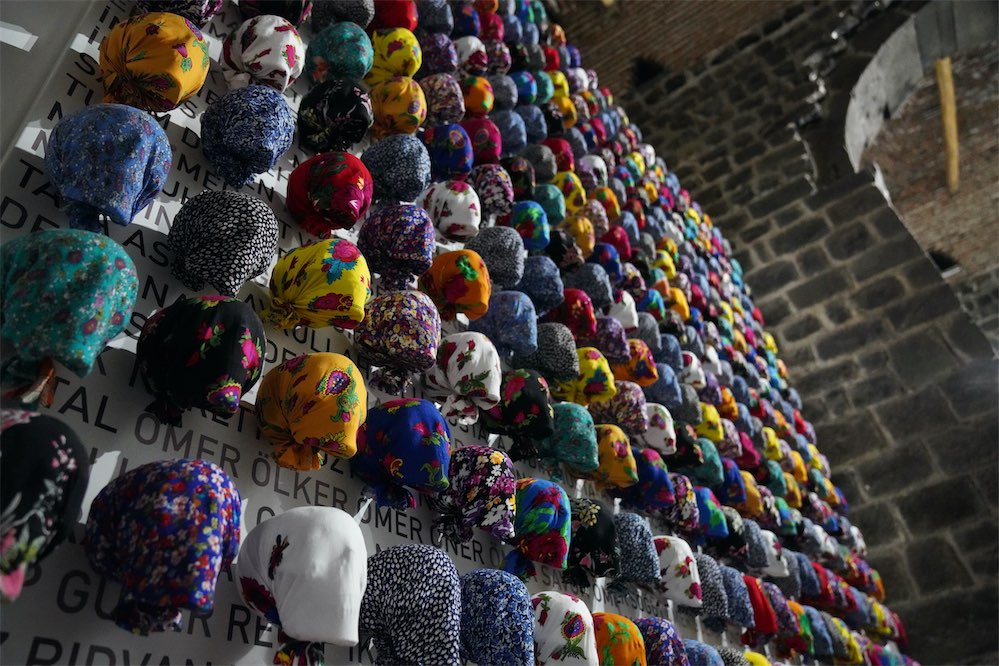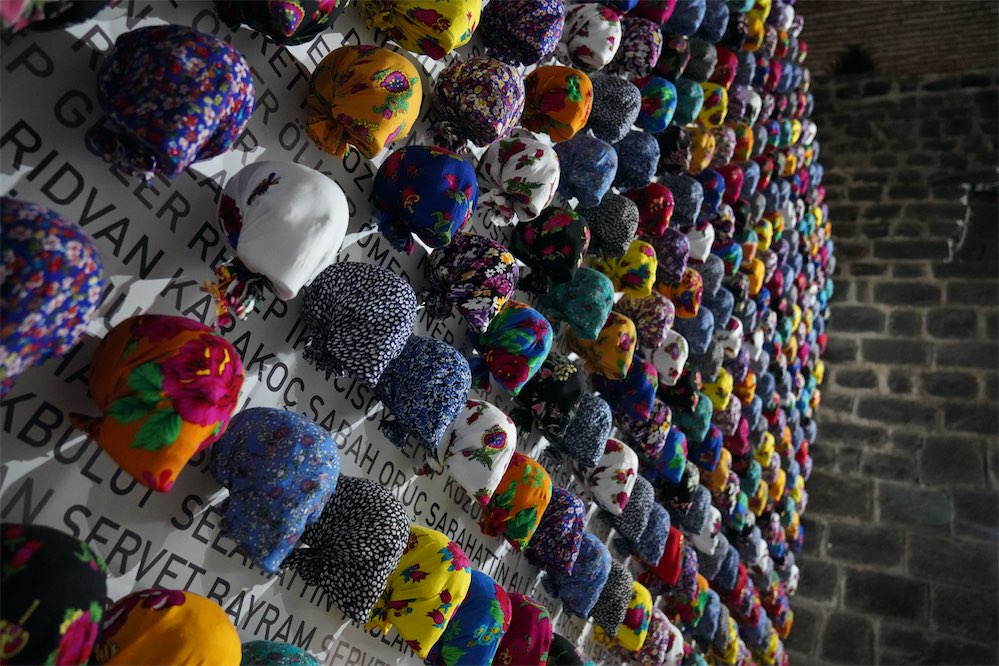16 October 2021 – 31 December 2021
Memory Chamber
Keçi Burcu, Diyarbakır
Represented by PILEVNELI
PILEVNELI is pleased to present Memory Chamber, an exhibition of works by Ahmet Güneştekin, on view at Keçi Burcu (Goat Tower) in southeastern Diyarbakır province between October 16 and December 31, 2021. The exhibition, hosted by the Diyarbakır Chamber of Commerce and Industry and organized by PILEVNELI, brings together the artist’s works from diverse media, displaying his modes of re-orchestrating the materials.
Memory Chamber explores the forms of artistic recollection and shows how to render audible the erasure of the voices of those who would otherwise remain entirely unheard, completely forgotten. Güneştekin’s works demonstrate modes of epistemic resistance, making space for counter memories that challenge the official discourse and stand in solidarity with the past’s fragmented memories.
Memory Chamber consists of the artist’s installations of objects and videos, which through their silence and singularity, bear witness to an absence, speak of a history that emerges from this absence, and serve as a constant reminder that this absence will continue haunting the present in its stubborn latency, in its claim for a place for its remembrance, if not recollected and recounted. Paintings, sculptures, and works of fabric in which the artist integrates mythologies and iconographic elements as a source of reminiscence of the past and improves new narrative scopes are also on display.
Memory Chamber focuses on how the artist re-orchestrates sound and images and raises the following questions: Where are the memories of those events for which there were no witnesses? Where are these memories when witnesses are gone? Where are the unphotographed images? What are the traces of events for which there were no camera images? What happens if the possibility of mourning is denied? In other words, what happens when absence cannot be compensated through an image because what is absent is not the dead but death itself?
The event survives in its belated character, as that which cannot be completely remembered, but stubbornly resists as an unresolved past; a past that is yet to be remembered, whose history has not yet been written. There are things that have happened for which the only images that exist are in the minds of observers present at the time, while there are things that have happened or which there have been no observers, except the spirits of the dead. How can we make them audible and integrate them into the realms of experience, memory, and history? The visions of this non-imaged past that the artist has carried in his memory are his raw materials for the works exhibited in the Memory Chamber.
Güneştekin’s works install a grammar that can bear witness to the erasure of the events, their compulsive historical repetition, and the stubbornness with which they have managed to resist oblivion. Their resistance depends on the ability to shelter and dwell in the interstices of a memory whose task is not to reveal but rather to accompany in silence. Hence, they speak another language precisely where the possibilities of mourning and remembering have been denied. The installations of the artist do not attempt to speak in the name of those who have not been heard. They represent the ungraspable, overflowing excess of silenced disappearance.
What is at stake here, however, is not only the claim of a history that has not yet been told, whose absence the work eloquently proclaims. It is the recurring and ongoing effects this silence continues to generate – and will continue to generate in the future as it is officially and institutionally erased. The past is remembered here in its resistance to forgetting; furthermore, it is only remembered as this resistance through the repetitive experience of its loss.
The artist’s works represent the forms that memory takes when it does not find other ways of being exposed, acknowledged, and listened to. And they do not attempt to speak for others, to give them a voice or any other kind of ease; they do not attempt to replace the impossible mourning represented by the fictional encounter between the unmourned dead and the bodiless names. They only accompany this ungraspable and unimaginable mourning through its empty and ghostlike presence. What we discover in the encounter between the nameless dead bodies and these bodiless names that are cried for, buried, and remembered in the threshold between memory and oblivion is the story of a road that leads to the possibility of making amends with a present that would otherwise be impossible to face.
Memory is an amorphous, ever-changing field of pictures for the artist, rather than a repository for images that will be mined. It is constantly susceptible to negotiation and revision at the point where the personal and the collective, as well as the past and the future, collide. As the art works in the Memory Chamber show, the forms of artistic recollection bring up new ways of writing about this unresolved past.
The exhibition is supported by Deniz Bank, Tatko and Lokal Enerji. The exhibition is accompanied by a comprehensive book published by PILEVNELI. Şener Özmen contributes an article to the book that provides a multi-layered perspective of the artist’s study and activities in a variety of political and cultural contexts. The book also includes a lengthy interview between Özmen and Güneştekin, which covers the exhibition’s theoretical foundations as well as various subjects of discussion on contemporary art politics.





